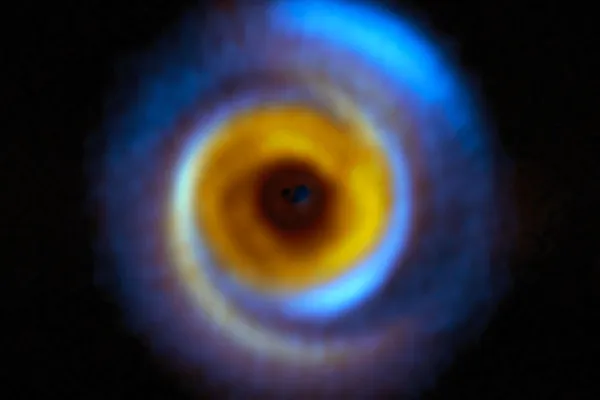A new study may reveal the secrets of planet birth
- March 5, 2024
- 0
For astronomy buffs this Christmas, a team of researchers published nearly 80 stars in our galaxy; These images could reveal new information about how planets are born. The
For astronomy buffs this Christmas, a team of researchers published nearly 80 stars in our galaxy; These images could reveal new information about how planets are born. The

For astronomy buffs this Christmas, a team of researchers published nearly 80 stars in our galaxy; These images could reveal new information about how planets are born. The young stars captured by the European Southern Observatory’s Very Large Telescope in Chile (ESO’s VLT) are all surrounded by impressive disks of dust and gas. It is this material that eventually coalesces into planets.
Although such disks are hundreds of times the distance between Earth and the Sun, their locations hundreds of light-years away make them little more than tiny needles in the night sky. As a result, the new images do not show individual planets, but give clues to the processes that occurred during their formation.
The disks in the new images come in a variety of shapes and sizes, showing the complex diversity of ways planetary systems form. Some have huge spiral arms that researchers believe may be driven by planets orbiting stars, while others have rings and large cavities of gas and dust that form during planet formation. Some disks, meanwhile, appear almost perfectly smooth, like bowls floating in distant space.
“It’s almost poetic that the processes that mark the beginning of the path to the formation of planets and, ultimately, life in our solar system are so beautiful,” said Per-Gunnar Valegaord, a PhD student at the University of Amsterdam. The Netherlands led one of the studies.
Astronomers have previously wondered why so many other solar systems seen from Earth (more than 5,000 so far) look so different from our own. But these new images may indicate that disks surrounding young stars may play a role. But researchers still can’t understand why discs are so diverse.
In total, the team examined 86 stars in three star-forming regions: Taurus and Chameleon I, both about 600 light-years away, and Orion, a gas-rich cloud 1,600 light-years away that is known to produce massive stars. A large international group of scientists from more than 10 countries participated in the observations.
Among the trove of findings revealed by the new study, astronomers were able to obtain some important information about where and why planets may form. For example, they found that stars gravitationally bound together in groups of two or more are less likely to have large planet-forming disks. This may be important because, unlike our Sun, most stars have moons.
It is hoped that future telescopes such as ESO’s Extremely Large Telescope with its giant 39-metre mirror will allow astronomers to probe the depths of such planet-forming disks, revealing in greater detail the regions near stars where rocky planets are found. How the world was formed. We may even observe the birth of a young Earth.
“This is a significant change for our field,” said Christian Ginsky, a lecturer at the University of Galway in Ireland and lead author of one of three new papers published in 2010. Astronomy and Astrophysics. “We moved from studying individual star systems to a broad survey of entire star-forming regions.”
Source: Port Altele
As an experienced journalist and author, Mary has been reporting on the latest news and trends for over 5 years. With a passion for uncovering the stories behind the headlines, Mary has earned a reputation as a trusted voice in the world of journalism. Her writing style is insightful, engaging and thought-provoking, as she takes a deep dive into the most pressing issues of our time.